May 30, 2025 | 13:02 GMT +7
May 30, 2025 | 13:02 GMT +7
Hotline: 0913.378.918
May 30, 2025 | 13:02 GMT +7
Hotline: 0913.378.918

Mr. Nguyen Dinh Dang, Director of the Hanoi Sub-Department of Animal Husbandry and Veterinary Medicine, said that the city's rabies vaccination rate for dogs and cats reached over 90%. Photo: Tung Dinh.
Mr. Nguyen Dinh Dang, Director of the Hanoi Sub-Department of Animal Husbandry and Veterinary Medicine, said that currently, the entire city’s rabies vaccination rate for dogs and cats reached an average of over 90%, of which some districts reached an extremely high rate of approximately 100%.
"Only batches of dogs and cats that have just been brought back and have not yet been vaccinated will be completed with additional injections," said Director Nguyen Dinh Dang. To get this result, he believes that an important factor is the very good awareness of livestock vaccination among people in the area.
In addition to people's awareness, Hanoi is also a locality with many advantages for implementing vaccination. First of all, the support and concern of the government must be mentioned. When the Central launches national programs related to rabies in the periods of 2016–2021 or 2022–2030, the city has plans for long-term programs.
Thereby, the city has policies to support vaccines, vaccination, and the work of sanitation and disinfection, especially for suburban localities.
"Particularly for rabies, the city currently provides 100% vaccine support for 18 suburban districts and towns. As for the 12 inner-city districts, besides good financial conditions, the number of dogs and cats is not large, and most of them are raised as pets, so the vaccination is very proactive. Therefore, the city does not support vaccines," Mr. Nguyen Dinh Dang further explained.
These factors have helped Hanoi's rabies vaccination rate to be maintained at a high level in recent years. Along with that, the rate and number of people dying from rabies related to dogs and cats also progressively decreased.
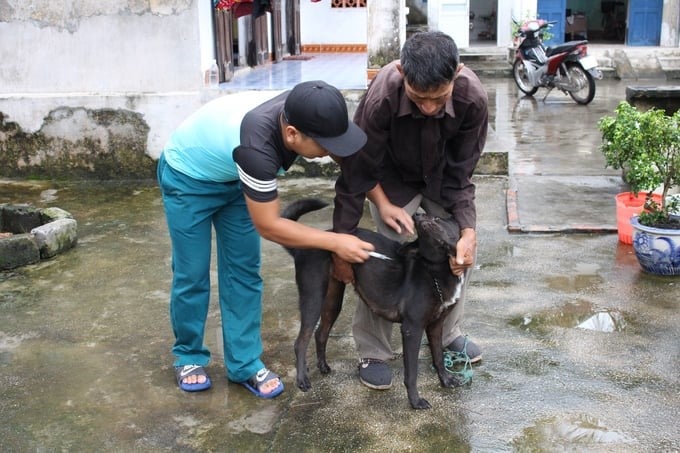
Rabies vaccination activities for dogs and cats in Hanoi have been actively implemented in recent years. Photo: Quang Ninh.
According to data from the Hanoi Sub-Department of Animal Husbandry and Veterinary Medicine, in 2022, the entire city only had 1 person dying from rabies, while in 2023, no case has been recorded so far.
"We are now striving to achieve the goal that by 2030, Hanoi will have no more deaths due to rabies," Mr. Nguyen Dinh Dang shared. According to Mr. Nguyen Dinh Dang, this is a very big goal. To achieve it, there must be synchronization from management to vaccination, raising people's awareness of compliance with grazing or even self-vaccination awareness when bitten by dogs or scratched by cats, not being subjective.
More broadly, the city's goal by 2025 is to build all 12 inner-city districts into disease-free zones for dog and cat rabies. From there, with the spirit of gradually spreading, the city will expand the disease-free zone to other districts and towns, then to the entire city.
If this goal is implemented successfully, it will bring many benefits to the city. In terms of economics, in recent years, on average each year, Hanoi has had about 15,000 people vaccinated against rabies after being bitten by dogs or scratched by cats, with an average cost of VND 1.5–2 million/person. The total cost can be up to over VND 20 billion. When there is a disease-free zone for dog and cat rabies, this number will be minimized. In addition, this is also a factor that can help develop tourism for the city because tourists can feel completely secure when visiting the capital of Vietnam.
By the end of September 2023, the entire city had had nearly 380,000 dogs and cats vaccinated against rabies, reaching 96% of the year's plan. Besides, the Sub-Department also organized 35 training classes to disseminate measures to prevent and control animal rabies, with a total attendance of 3,395 people.
According to this timeline, Hanoi has 8 districts (Thanh Xuan, Tay Ho, Hoan Kiem, Ba Dinh, Dong Da, Hai Ba Trung, Long Bien, and Ha Dong) that were granted a Certificate of Animal Rabies-Free Zone by the Department of Animal Health.
Currently, for rabies in dogs and cats, there is no shortage of vaccines in Hanoi. Vaccinations for dogs and cats peak in March and April, before the hot season. Then, in September and October, there will be additional injections deployed along with vaccination programs against other diseases.
Translated by Huyen Vu Thu

(VAN) Ms. Nguyen Thi Dung, Deputy Director of Ngoc Hoang Cooperative, shared about the journey of bringing dragon fruit to Europe, achieving annual revenues in the billions of VND.

(VAN) Bamboo products from Thang Tho Bamboo Cooperative have reached many countries around the world, while also creating jobs for local workers.
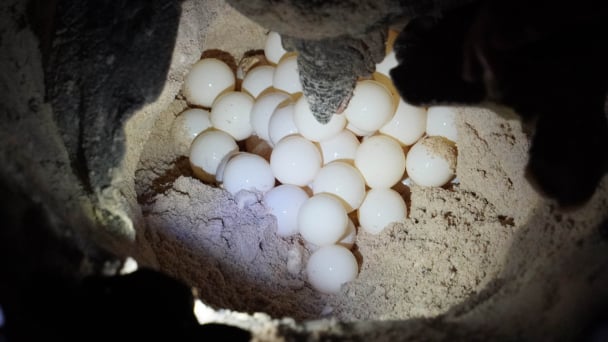
(VAN) The Management Board of Con Dao National Park reported that a green sea turtle, tagged in the Philippines, has traveled thousands of kilometers to lay 84 eggs on Bay Canh Islet.
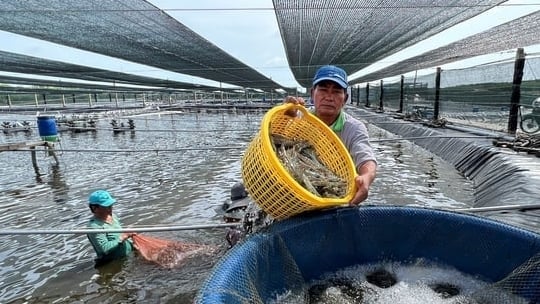
(VAN) Green technology is paving a new path for sustainable aquaculture in the Mekong Delta in particular and across the country in general, helping reduce emissions and adapt to climate change.
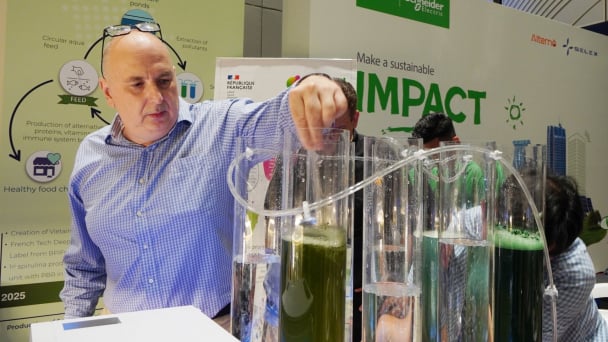
(VAN) On May 27, La French Tech Vietnam (the French startup and innovation community in Vietnam) held the French Tech Summit Vietnam 2025.
/2025/05/27/4731-2-223159_980.jpg)
(VAN) No votive paper, no styrofoam, no plastic bags, no plastic bottles, and no single-use plastic trays are the key rules tourists should keep in mind when visiting Con Dao.
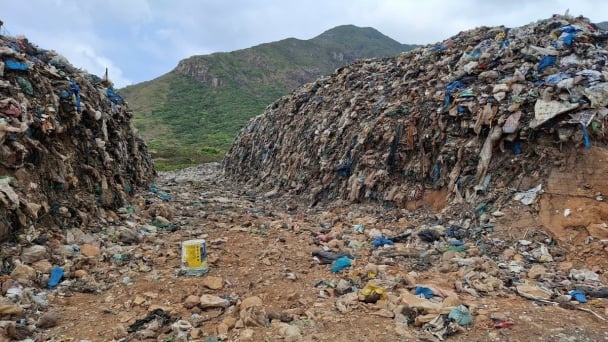
(VAN) In the fight against plastic pollution, Vietnam has been demonstrating a proactive, pioneering, and active role in addressing the greatest environmental challenge today.